- Home Sea trials Racing or cruising… The X-41 OD can handle it all
Racing or cruising… The X-41 OD can handle it all
The X-41 OD is a racing yacht with full accommodation with which you do anything and everything. It has, as standard equipment, wonderful detailing to help performance, including hardware go-fasts that will make a racing sailor salivate. The table, and the cupboards behind and above the settees, lift out for racing. Anchor, chain and (wait for it) the electric anchor winch live in a bin in the bow, which is removable; you can leave the whole thing on the dock. Not so much to save weight, I suspect, as to getting that weight out of the bow to help the pitching moment. The X-41 OD’s accommodation, while not as opulent, as avant-garde and high style as some, has a traditional look and feel and is comfortable enough for the use the average owner will demand. X-Yachts are more conservatively styled than most Europeans but to my eye it’s a traditional look that may not date as quickly as the more frenetic styles. X-Yachts are well built: a galvanised steel H-frame supports the foam-cored hull and accepts the loads from rigging and keel. The top part of the keel is cast iron, incorporating a sump to collect water. The lower keel of the X-41 OD is connected to the cast antimony-hardened lead bulb, and the lot is encapsulated in an epoxy shell. One shipwright mentioned that he was impressed by the lifting eye incorporated into the H-frame a lifting strap is included in the options list. With stellar performance, clean design, and attention to detail in its hardware, construction, it was a standout in a crowded field of crossover designs, boats as well suited for racing as they are for cruising. A first look at the X-41 shows a slight rake to the stem, and the stern has powerful cross sections and a small amount of overhang, indicating this boat is all waterline. At just under 12-feet wide the X-41 has moderate beam, and the 8-foot T-bulb keel provides more stability than some similar boats. The carbon-fiber Nordic mast, six winches, halyard clutches, and sail control hardware all say this boat wants to race.
ACCOMMODATION: There are three cabins, the master cabin in the bow, two aft, all with double berths. There is one bathroom, forward on the starboard side, next to the master cabin but it’s simple and it is not en suite. The trim throughout is conservative, white moulded areas and horizontal-grained teak. If you take out the table for racing it exposes a stainless steel hoop to help locate both the sails and the crew. The table is the familiar drop-leaf style, mounted on the centreline. No coffee table area, as in some craft. In the galley the fridge is nice and deep, with a side shelf to hold bottles so you don’t have to scratch around in the bottom. Crockery is stowed behind simple cut-outs in the front of the teak shelving. The saloon has two opening ports each side, vital in an Aussie boat. Andrew Parkes from X-Yachts points out that opening ports need never leak if you wash salt and grime from the gaskets with a wet rag, and occasionally nip up the clamps to maintain tension.
SAILING: The list of standard go-fast equipment is long. It’s all the sort of gear that serious racing skippers add to standard cruiser racers, and racer/racing boats are delivered with. The one I like is that the rigging screw bodies are calibrated so you can easily reproduce approximate rig tension. One option is the hydraulic ram under the mast heel to control rig tension. Another admirable feature is that wherever a line can possibly rub on the gelcoat a metal piece is fixed to the gelcoat to protect it. The winches are big. “Nothing is underwicked,” says Andrew. The hardware is marked with the Ronstan trademark; the Aussie company took over the Scandinavian Fredericksen company and has rebranded the equipment. The X-41 sails like a witch (how does a witch sail Ed). The steering is old-fashioned by current standards wire and quadrant but the quadrant is immediately below the helmsman’s feet, so the wire is short and passes over only one set of sheaves. Under sail there is no lost motion and the gearing is perfect. Typical X-Yacht approach ain’t broke, don’t fix. The X-41 is fast. Target speed the speed that skippers aim for when tuning and racing is 7.5 knots hard on the wind in 15 knots of wind, which is quick. We saw 6.1 knots in a bit over 7 True, which is also quick. The crew shows me how, when she is settled down and trimmed to go upwind, an easy tug on the barber hauler a tackle that moves the jib clew inboard allows the X-41 to point much higher. But if you are not racing you don’t have to use these systems. The backstay and mainsheet traveller can be reached by the helmsman to help short-handed sailing, but the headsail winches are further forward. The 40hp Volvo Penta diesel is almost silent. So the X-41 exemplifies the Scandinavian approach. There is no external ornamentation X-Yachts would be anonymous but for the distinctive horizontal stripes above the waterline which they all carry.
“SAILING WORLD” SEA TRIAL: During our test sail the X-41 accelerated well in only 6 knots of wind. With two sets of aft-swept spreaders and chainplates on the rail, jib LP is limited to 106 percent but the foretriangle is tall, about 95 percent of mast height, and the rig was sized with the small jib overlap in mind. Sail controls are also in place to easily adjust the sails, powering up in the light and de-powering in more breeze with jib in-hauler tackle hidden in the companionway hatch rails. The main trimmer has no need to leave the weather side as all controls are within reach.The helm on this boat feels great; smooth with no friction in the Jefa rudder bearings and steering components controlled with a 67-inch carbon wheel. Upwind there is a touch of weather helm pressure to keep the helmsman happy and in touch with the boat’s feel. The helmsman has terrific visibility from the weather side with the jib telltales, oncoming waves, and up-course breeze all visible. Downwind the helm is again light and responsive, but also positive.Off the wind the X-41 sets a 1,577- square-foot masthead spinnaker on a traditional spinnaker pole. Our speed on the GPS was 5.5 knots in just under 6 knots true-wind speed at a true-wind angle of 130 degrees. Maneuvers went smoothly with the cockpit laid out so headsail trimmers were not elbowing the main trimmer.Typical of many boats this size, the spinnaker sheets share the cabin-top winches; halyards and afterguys lead to primary winches. Dual-diameter Harken Quattro drums on the cabin house accommodate for the different line speeds required by a light-air spinnaker sheet trim and the last centimeter of a heavily loaded halyard. Harken three-speed primary winches have the range of speed and power to handle jib sheets and afterguys.There are toe rails forward of the mast only, and the lifeline stanchions are located all the way outboard, within an inch of the rail, which puts the lower lifeline further outboard so it’s easier for crew to hike hard. At the bow the twin groove headfoil has a jib-furling drum set below deck to take full advantage of available luff length.
Condividi post su:

FLY

HARD TOP

OPEN

RUBBER DINGHY

CLASSIC OLD

MULTIHULL CATAMARAN

CRUISING

CRUISING/RACER

RACER

CLASSIC OLD

MULTIHULL CATAMARAN
Scegli Prezzo (€)
Min
- 10.000
- 15.000
- 20.000
- 25.000
- 30.000
- 35.000
- 40.000
- 45.000
- 50.000
- 55.000
- 60.000
- 65.000
- 70.000
- 75.000
- 80.000
- 85.000
- 90.000
- 95.000
- 100.000
- 110.000
- 120.000
- 130.000
- 140.000
- 150.000
- 160.000
- 170.000
- 180.000
- 190.000
- 200.000
- 220.000
- 240.000
- 260.000
- 280.000
- 300.000
- 330.000
- 360.000
- 390.000
- 400.000
- 440.000
- 480.000
- 500.000
- 550.000
- 600.000
- 650.000
- 700.000
- 750.000
- 800.000
- 850.000
- 900.000
- 950.000
- 1.000.000
- TUTTO
Max
- 10.000
- 15.000
- 20.000
- 25.000
- 30.000
- 35.000
- 40.000
- 45.000
- 50.000
- 55.000
- 60.000
- 65.000
- 70.000
- 75.000
- 80.000
- 85.000
- 90.000
- 95.000
- 100.000
- 110.000
- 120.000
- 130.000
- 140.000
- 150.000
- 160.000
- 170.000
- 180.000
- 190.000
- 200.000
- 220.000
- 240.000
- 260.000
- 280.000
- 300.000
- 330.000
- 360.000
- 390.000
- 400.000
- 440.000
- 480.000
- 500.000
- 550.000
- 600.000
- 650.000
- 700.000
- 750.000
- 800.000
- 850.000
- 900.000
- 950.000
- 1.000.000
- TUTTO
Scegli Anno
Min
- 2025
- 2018
- 2015
- 2012
- 2009
- 2006
- 2003
- 2000
- 1997
- 1994
- 1991
- 1988
- 1985
- 1982
- 1979
- 1976
- 1973
- 1970
- 1967
- 1964
- 1961
- 1958
- 1955
- 1952
- 1949
- 1946
- 1943
- 1940
- 1937
- 1934
- 1931
- 1928
- 1925
- 1922
- 1919
- 1916
- 1913
- 1910
- 1907
- 1904
- 1901
- 1900
Max
- 2025
- 2018
- 2015
- 2012
- 2009
- 2006
- 2003
- 2000
- 1997
- 1994
- 1991
- 1988
- 1985
- 1982
- 1979
- 1976
- 1973
- 1970
- 1967
- 1964
- 1961
- 1958
- 1955
- 1952
- 1949
- 1946
- 1943
- 1940
- 1937
- 1934
- 1931
- 1928
- 1925
- 1922
- 1919
- 1916
- 1913
- 1910
- 1907
- 1904
- 1901
- 1900
Scegli Lunghezza (mt)
Min
- 6,00
- 6,50
- 7,00
- 7,50
- 8,00
- 8,50
- 9,00
- 9,50
- 10,00
- 10,50
- 11,00
- 11,50
- 12,00
- 12,50
- 13,00
- 13,50
- 14,00
- 14,50
- 15,00
- 15,50
- 16,00
- 16,50
- 17,00
- 17,50
- 18,00
- 18,50
- 19,00
- 19,50
- 20,00
- 20,50
- 21,00
- 21,50
- 22,00
- 22,50
- 23,00
- 23,50
- 24,00
- 24,50
- 25,00
- 25,50
- 26,00
- 26,50
- 27,00
- 27,50
- 28,00
- 28,50
- 29,00
- 29,50
- 30,00
- 30,50
- 31,00
- 31,50
- 32,00
- 32,50
- 33,00
- 33,50
- 34,00
- 34,50
- 35,00
- 35,50
- 36,00
- 36,50
- 37,00
- 37,50
- 38,00
- 38,50
- 39,00
- 39,50
- 40,00
- 40,50
- 41,00
- 41,50
- 42,00
- 42,50
- 43,00
- 43,50
- 44,00
- 44,50
- 45,00
- 45,50
- 46,00
- 46,50
- 47,00
- 47,50
- 48,00
- 48,50
- 49,00
- 49,50
- 50,00
- 50,50
- 51,00
- 51,50
- 52,00
- 52,50
- 53,00
- 53,50
- 54,00
- 54,50
- 55,00
- 55,50
- 56,00
- 56,50
- 57,00
- 57,50
- 58,00
- 58,50
- 59,00
- 59,50
- 60,00
- 60,50
- 61,00
- 61,50
- 62,00
- 62,50
- 63,00
- 63,50
- 64,00
- 64,50
- 65,00
- 65,50
- 66,00
- 66,50
- 67,00
- 67,50
- 68,00
- 68,50
- 69,00
- 69,50
- 70,00
- 70,50
- 71,00
- 71,50
- 72,00
- 72,50
- 73,00
- 73,50
- 74,00
- 74,50
- 75,00
- 75,50
- 76,00
- 76,50
- 77,00
- 77,50
- 78,00
- 78,50
- 79,00
- 79,50
- 80,00
- 80,50
- 81,00
- 81,50
- 82,00
- 82,50
- 83,00
- 83,50
- 84,00
- 84,50
- 85,00
- 85,50
- 86,00
- 86,50
- 87,00
- 87,50
- 88,00
- 88,50
- 89,00
- 89,50
- 90,00
- 90,50
- 91,00
- 91,50
- 92,00
- 92,50
- 93,00
- 93,50
- 94,00
- 94,50
- 95,00
- 95,50
- 96,00
- 96,50
- 97,00
- 97,50
- 98,00
- 98,50
- 99,00
- 99,50
- 100,00
- 100,50
- 101,00
- 101,50
- 102,00
- 102,50
- 103,00
- 103,50
- 104,00
- 104,50
- 105,00
- 105,50
- 106,00
- 106,50
- 107,00
- 107,50
- 108,00
- 108,50
- 109,00
- 109,50
- 110,00
- 110,50
- 111,00
- 111,50
- 112,00
- 112,50
- 113,00
- 113,50
- 114,00
- 114,50
- 115,00
- 115,50
- 116,00
- 116,50
- 117,00
- 117,50
- 118,00
- 118,50
- 119,00
- 119,50
- 120,00
- 120,50
- 121,00
- 121,50
- 122,00
- 122,50
- 123,00
- 123,50
- 124,00
- 124,50
- 125,00
- 125,50
- 126,00
- 126,50
- 127,00
- 127,50
- 128,00
- 128,50
- 129,00
- 129,50
- 130,00
- 130,50
- 131,00
- 131,50
- 132,00
- 132,50
- 133,00
- 133,50
- 134,00
- 134,50
- 135,00
- 135,50
- 136,00
- 136,50
- 137,00
- 137,50
- 138,00
- 138,50
- 139,00
- 139,50
- 140,00
- 140,50
- 141,00
- 141,50
- 142,00
- 142,50
- 143,00
- 143,50
- 144,00
- 144,50
- 145,00
- 145,50
- 146,00
- 146,50
- 147,00
- 147,50
- 148,00
- 148,50
- 149,00
- 149,50
- 150,00
- 150,50
- 151,00
- 151,50
- 152,00
- 152,50
- 153,00
- 153,50
- 154,00
- 154,50
- 155,00
- 155,50
- 156,00
- 156,50
- 157,00
- 157,50
- 158,00
- 158,50
- 159,00
- 159,50
- 160,00
- 160,50
- 161,00
- 161,50
- 162,00
- 162,50
- 163,00
- 163,50
- 164,00
- 164,50
- 165,00
- 165,50
- 166,00
- 166,50
- 167,00
- 167,50
- 168,00
- 168,50
- 169,00
- 169,50
- 170,00
- 170,50
- 171,00
- 171,50
- 172,00
- 172,50
- 173,00
- 173,50
- 174,00
- 174,50
- 175,00
- 175,50
- 176,00
- 176,50
- 177,00
- 177,50
- 178,00
- 178,50
- 179,00
- 179,50
Max
- 6,00
- 6,50
- 7,00
- 7,50
- 8,00
- 8,50
- 9,00
- 9,50
- 10,00
- 10,50
- 11,00
- 11,50
- 12,00
- 12,50
- 13,00
- 13,50
- 14,00
- 14,50
- 15,00
- 15,50
- 16,00
- 16,50
- 17,00
- 17,50
- 18,00
- 18,50
- 19,00
- 19,50
- 20,00
- 20,50
- 21,00
- 21,50
- 22,00
- 22,50
- 23,00
- 23,50
- 24,00
- 24,50
- 25,00
- 25,50
- 26,00
- 26,50
- 27,00
- 27,50
- 28,00
- 28,50
- 29,00
- 29,50
- 30,00
- 30,50
- 31,00
- 31,50
- 32,00
- 32,50
- 33,00
- 33,50
- 34,00
- 34,50
- 35,00
- 35,50
- 36,00
- 36,50
- 37,00
- 37,50
- 38,00
- 38,50
- 39,00
- 39,50
- 40,00
- 40,50
- 41,00
- 41,50
- 42,00
- 42,50
- 43,00
- 43,50
- 44,00
- 44,50
- 45,00
- 45,50
- 46,00
- 46,50
- 47,00
- 47,50
- 48,00
- 48,50
- 49,00
- 49,50
- 50,00
- 50,50
- 51,00
- 51,50
- 52,00
- 52,50
- 53,00
- 53,50
- 54,00
- 54,50
- 55,00
- 55,50
- 56,00
- 56,50
- 57,00
- 57,50
- 58,00
- 58,50
- 59,00
- 59,50
- 60,00
- 60,50
- 61,00
- 61,50
- 62,00
- 62,50
- 63,00
- 63,50
- 64,00
- 64,50
- 65,00
- 65,50
- 66,00
- 66,50
- 67,00
- 67,50
- 68,00
- 68,50
- 69,00
- 69,50
- 70,00
- 70,50
- 71,00
- 71,50
- 72,00
- 72,50
- 73,00
- 73,50
- 74,00
- 74,50
- 75,00
- 75,50
- 76,00
- 76,50
- 77,00
- 77,50
- 78,00
- 78,50
- 79,00
- 79,50
- 80,00
- 80,50
- 81,00
- 81,50
- 82,00
- 82,50
- 83,00
- 83,50
- 84,00
- 84,50
- 85,00
- 85,50
- 86,00
- 86,50
- 87,00
- 87,50
- 88,00
- 88,50
- 89,00
- 89,50
- 90,00
- 90,50
- 91,00
- 91,50
- 92,00
- 92,50
- 93,00
- 93,50
- 94,00
- 94,50
- 95,00
- 95,50
- 96,00
- 96,50
- 97,00
- 97,50
- 98,00
- 98,50
- 99,00
- 99,50
- 100,00
- 100,50
- 101,00
- 101,50
- 102,00
- 102,50
- 103,00
- 103,50
- 104,00
- 104,50
- 105,00
- 105,50
- 106,00
- 106,50
- 107,00
- 107,50
- 108,00
- 108,50
- 109,00
- 109,50
- 110,00
- 110,50
- 111,00
- 111,50
- 112,00
- 112,50
- 113,00
- 113,50
- 114,00
- 114,50
- 115,00
- 115,50
- 116,00
- 116,50
- 117,00
- 117,50
- 118,00
- 118,50
- 119,00
- 119,50
- 120,00
- 120,50
- 121,00
- 121,50
- 122,00
- 122,50
- 123,00
- 123,50
- 124,00
- 124,50
- 125,00
- 125,50
- 126,00
- 126,50
- 127,00
- 127,50
- 128,00
- 128,50
- 129,00
- 129,50
- 130,00
- 130,50
- 131,00
- 131,50
- 132,00
- 132,50
- 133,00
- 133,50
- 134,00
- 134,50
- 135,00
- 135,50
- 136,00
- 136,50
- 137,00
- 137,50
- 138,00
- 138,50
- 139,00
- 139,50
- 140,00
- 140,50
- 141,00
- 141,50
- 142,00
- 142,50
- 143,00
- 143,50
- 144,00
- 144,50
- 145,00
- 145,50
- 146,00
- 146,50
- 147,00
- 147,50
- 148,00
- 148,50
- 149,00
- 149,50
- 150,00
- 150,50
- 151,00
- 151,50
- 152,00
- 152,50
- 153,00
- 153,50
- 154,00
- 154,50
- 155,00
- 155,50
- 156,00
- 156,50
- 157,00
- 157,50
- 158,00
- 158,50
- 159,00
- 159,50
- 160,00
- 160,50
- 161,00
- 161,50
- 162,00
- 162,50
- 163,00
- 163,50
- 164,00
- 164,50
- 165,00
- 165,50
- 166,00
- 166,50
- 167,00
- 167,50
- 168,00
- 168,50
- 169,00
- 169,50
- 170,00
- 170,50
- 171,00
- 171,50
- 172,00
- 172,50
- 173,00
- 173,50
- 174,00
- 174,50
- 175,00
- 175,50
- 176,00
- 176,50
- 177,00
- 177,50
- 178,00
- 178,50
- 179,00
- 179,50
Scegli Larghezza (mt)
Min
- 2,00
- 2,10
- 2,20
- 2,30
- 2,40
- 2,50
- 2,60
- 2,70
- 2,80
- 2,90
- 3,00
- 3,10
- 3,20
- 3,30
- 3,40
- 3,50
- 3,60
- 3,70
- 3,80
- 3,90
- 4,00
- 4,10
- 4,20
- 4,30
- 4,40
- 4,50
- 4,60
- 4,70
- 4,80
- 4,90
- 5,00
- 5,10
- 5,20
- 5,30
- 5,40
- 5,50
- 5,60
- 5,70
- 5,80
- 5,90
- 6,00
- 6,10
- 6,20
- 6,30
- 6,40
- 6,50
- 6,60
- 6,70
- 6,80
- 6,90
- 7,00
- 7,10
- 7,20
- 7,30
- 7,40
- 7,50
- 7,60
- 7,70
- 7,80
- 7,90
- 8,00
- 8,10
- 8,20
- 8,30
- 8,40
- 8,50
- 8,60
- 8,70
- 8,80
- 8,90
- 9,00
- 9,10
- 9,20
- 9,30
- 9,40
- 9,50
- 9,60
- 9,70
- 9,80
- 9,90
- 10,00
- 10,10
- 10,20
- 10,30
- 10,40
- 10,50
- 10,60
- 10,70
- 10,80
- 10,90
- 11,00
- 11,10
- 11,20
- 11,30
- 11,40
- 11,50
- 11,60
- 11,70
- 11,80
- 11,90
- 12,00
- 12,10
- 12,20
- 12,30
- 12,40
- 12,50
- 12,60
- 12,70
- 12,80
- 12,90
- 13,00
- 13,10
- 13,20
- 13,30
- 13,40
- 13,50
- 13,60
- 13,70
- 13,80
- 13,90
- 14,00
- 14,10
- 14,20
- 14,30
- 14,40
- 14,50
- 14,60
- 14,70
- 14,80
- 14,90
- 15,00
Max
- 2,00
- 2,10
- 2,20
- 2,30
- 2,40
- 2,50
- 2,60
- 2,70
- 2,80
- 2,90
- 3,00
- 3,10
- 3,20
- 3,30
- 3,40
- 3,50
- 3,60
- 3,70
- 3,80
- 3,90
- 4,00
- 4,10
- 4,20
- 4,30
- 4,40
- 4,50
- 4,60
- 4,70
- 4,80
- 4,90
- 5,00
- 5,10
- 5,20
- 5,30
- 5,40
- 5,50
- 5,60
- 5,70
- 5,80
- 5,90
- 6,00
- 6,10
- 6,20
- 6,30
- 6,40
- 6,50
- 6,60
- 6,70
- 6,80
- 6,90
- 7,00
- 7,10
- 7,20
- 7,30
- 7,40
- 7,50
- 7,60
- 7,70
- 7,80
- 7,90
- 8,00
- 8,10
- 8,20
- 8,30
- 8,40
- 8,50
- 8,60
- 8,70
- 8,80
- 8,90
- 9,00
- 9,10
- 9,20
- 9,30
- 9,40
- 9,50
- 9,60
- 9,70
- 9,80
- 9,90
- 10,00
- 10,10
- 10,20
- 10,30
- 10,40
- 10,50
- 10,60
- 10,70
- 10,80
- 10,90
- 11,00
- 11,10
- 11,20
- 11,30
- 11,40
- 11,50
- 11,60
- 11,70
- 11,80
- 11,90
- 12,00
- 12,10
- 12,20
- 12,30
- 12,40
- 12,50
- 12,60
- 12,70
- 12,80
- 12,90
- 13,00
- 13,10
- 13,20
- 13,30
- 13,40
- 13,50
- 13,60
- 13,70
- 13,80
- 13,90
- 14,00
- 14,10
- 14,20
- 14,30
- 14,40
- 14,50
- 14,60
- 14,70
- 14,80
- 14,90
- 15,00
Scegli Immersione (mt)
Min
- 0,00
- 0,10
- 0,20
- 0,30
- 0,40
- 0,50
- 0,60
- 0,70
- 0,80
- 0,90
- 1,00
- 1,10
- 1,20
- 1,30
- 1,40
- 1,50
- 1,60
- 1,70
- 1,80
- 1,90
- 2,00
- 2,10
- 2,20
- 2,30
- 2,40
- 2,50
- 2,60
- 2,70
- 2,80
- 2,90
- 3,00
- 3,10
- 3,20
- 3,30
- 3,40
- 3,50
- 3,60
- 3,70
- 3,80
- 3,90
- 4,00
- 4,10
- 4,20
- 4,30
- 4,40
- 4,50
- 4,60
- 4,70
- 4,80
- 4,90
- 5,00
- 5,10
- 5,20
- 5,30
- 5,40
- 5,50
- 5,60
- 5,70
- 5,80
- 5,90
- 6,00
- 6,10
- 6,20
- 6,30
- 6,40
- 6,50
- 6,60
- 6,70
- 6,80
- 6,90
- 7,00
- 7,10
- 7,20
- 7,30
- 7,40
- 7,50
- 7,60
- 7,70
- 7,80
- 7,90
- 8,00
- 8,10
- 8,20
- 8,30
- 8,40
- 8,50
- 8,60
- 8,70
- 8,80
- 8,90
- 9,00
- 9,10
- 9,20
- 9,30
- 9,40
- 9,50
- 9,60
- 9,70
- 9,80
- 9,90
- 10,00
- 10,10
- 10,20
- 10,30
- 10,40
- 10,50
- 10,60
- 10,70
- 10,80
- 10,90
- 11,00
- 11,10
- 11,20
- 11,30
- 11,40
- 11,50
- 11,60
- 11,70
- 11,80
- 11,90
- 12,00
- 12,10
- 12,20
- 12,30
- 12,40
- 12,50
- 12,60
- 12,70
- 12,80
- 12,90
- 13,00
- 13,10
- 13,20
- 13,30
- 13,40
- 13,50
- 13,60
- 13,70
- 13,80
- 13,90
- 14,00
- 14,10
- 14,20
- 14,30
- 14,40
- 14,50
- 14,60
- 14,70
- 14,80
- 14,90
- 15,00
- 15,10
- 15,20
- 15,30
- 15,40
- 15,50
- 15,60
- 15,70
- 15,80
- 15,90
- 16,00
- 16,10
- 16,20
- 16,30
- 16,40
- 16,50
- 16,60
- 16,70
- 16,80
- 16,90
- 17,00
- 17,10
- 17,20
- 17,30
- 17,40
- 17,50
- 17,60
- 17,70
- 17,80
- 17,90
- 18,00
- 18,10
- 18,20
- 18,30
- 18,40
- 18,50
- 18,60
- 18,70
- 18,80
- 18,90
- 19,00
- 19,10
- 19,20
- 19,30
- 19,40
- 19,50
- 19,60
- 19,70
- 19,80
- 19,90
- 20,00
- 20,10
- 20,20
- 20,30
- 20,40
- 20,50
- 20,60
- 20,70
- 20,80
- 20,90
- 21,00
- 21,10
- 21,20
- 21,30
- 21,40
- 21,50
- 21,60
- 21,70
- 21,80
- 21,90
- 22,00
- 22,10
- 22,20
- 22,30
- 22,40
- 22,50
- 22,60
- 22,70
- 22,80
- 22,90
- 23,00
- 23,10
- 23,20
- 23,30
- 23,40
- 23,50
- 23,60
- 23,70
- 23,80
- 23,90
- 24,00
- 24,10
- 24,20
- 24,30
- 24,40
- 24,50
- 24,60
- 24,70
- 24,80
- 24,90
- 25,00
- 25,10
- 25,20
- 25,30
- 25,40
- 25,50
- 25,60
- 25,70
- 25,80
- 25,90
- 26,00
- 26,10
- 26,20
- 26,30
- 26,40
- 26,50
- 26,60
- 26,70
- 26,80
- 26,90
- 27,00
- 27,10
- 27,20
- 27,30
- 27,40
- 27,50
- 27,60
- 27,70
- 27,80
- 27,90
- 28,00
- 28,10
- 28,20
- 28,30
- 28,40
- 28,50
- 28,60
- 28,70
- 28,80
- 28,90
- 29,00
- 29,10
- 29,20
- 29,30
- 29,40
- 29,50
- 29,60
- 29,70
- 29,80
- 29,90
- 30,00
- 30,10
- 30,20
- 30,30
- 30,40
- 30,50
- 30,60
- 30,70
- 30,80
- 30,90
- 31,00
- 31,10
- 31,20
- 31,30
- 31,40
- 31,50
- 31,60
- 31,70
- 31,80
- 31,90
- 32,00
- 32,10
- 32,20
- 32,30
- 32,40
- 32,50
- 32,60
- 32,70
- 32,80
- 32,90
- 33,00
- 33,10
- 33,20
- 33,30
- 33,40
- 33,50
- 33,60
- 33,70
- 33,80
- 33,90
- 34,00
- 34,10
- 34,20
- 34,30
- 34,40
- 34,50
- 34,60
- 34,70
- 34,80
- 34,90
- 35,00
- 35,10
- 35,20
- 35,30
- 35,40
- 35,50
- 35,60
- 35,70
- 35,80
- 35,90
- 36,00
- 36,10
- 36,20
- 36,30
- 36,40
- 36,50
- 36,60
- 36,70
- 36,80
- 36,90
- 37,00
- 37,10
- 37,20
- 37,30
- 37,40
- 37,50
- 37,60
- 37,70
- 37,80
- 37,90
- 38,00
- 38,10
- 38,20
- 38,30
- 38,40
- 38,50
- 38,60
- 38,70
- 38,80
- 38,90
- 39,00
- 39,10
- 39,20
- 39,30
- 39,40
- 39,50
- 39,60
- 39,70
- 39,80
- 39,90
- 40,00
- 40,10
- 40,20
- 40,30
- 40,40
- 40,50
- 40,60
- 40,70
- 40,80
- 40,90
- 41,00
- 41,10
- 41,20
- 41,30
- 41,40
- 41,50
- 41,60
- 41,70
- 41,80
- 41,90
- 42,00
- 42,10
- 42,20
- 42,30
- 42,40
- 42,50
- 42,60
- 42,70
- 42,80
- 42,90
- 43,00
- 43,10
- 43,20
- 43,30
- 43,40
- 43,50
- 43,60
- 43,70
- 43,80
- 43,90
- 44,00
- 44,10
- 44,20
- 44,30
- 44,40
- 44,50
- 44,60
- 44,70
- 44,80
- 44,90
- 45,00
- 45,10
- 45,20
- 45,30
- 45,40
- 45,50
- 45,60
- 45,70
- 45,80
- 45,90
- 46,00
- 46,10
- 46,20
- 46,30
- 46,40
- 46,50
- 46,60
- 46,70
- 46,80
- 46,90
- 47,00
- 47,10
- 47,20
- 47,30
- 47,40
- 47,50
- 47,60
- 47,70
- 47,80
- 47,90
- 48,00
- 48,10
- 48,20
- 48,30
- 48,40
- 48,50
- 48,60
- 48,70
- 48,80
- 48,90
- 49,00
- 49,10
- 49,20
- 49,30
- 49,40
- 49,50
- 49,60
- 49,70
- 49,80
- 49,90
- 50,00
- 50,10
- 50,20
- 50,30
- 50,40
- 50,50
- 50,60
- 50,70
- 50,80
- 50,90
- 51,00
- 51,10
- 51,20
- 51,30
- 51,40
- 51,50
- 51,60
- 51,70
- 51,80
- 51,90
- 52,00
- 52,10
- 52,20
- 52,30
- 52,40
- 52,50
- 52,60
- 52,70
- 52,80
- 52,90
- 53,00
- 53,10
- 53,20
- 53,30
- 53,40
- 53,50
- 53,60
- 53,70
- 53,80
- 53,90
- 54,00
- 54,10
- 54,20
- 54,30
- 54,40
- 54,50
- 54,60
- 54,70
- 54,80
- 54,90
- 55,00
- 55,10
- 55,20
- 55,30
- 55,40
- 55,50
- 55,60
- 55,70
- 55,80
- 55,90
- 56,00
- 56,10
- 56,20
- 56,30
- 56,40
- 56,50
- 56,60
- 56,70
- 56,80
- 56,90
- 57,00
- 57,10
- 57,20
- 57,30
- 57,40
- 57,50
- 57,60
- 57,70
- 57,80
- 57,90
- 58,00
- 58,10
- 58,20
- 58,30
- 58,40
- 58,50
- 58,60
- 58,70
- 58,80
- 58,90
- 59,00
- 59,10
- 59,20
- 59,30
- 59,40
- 59,50
- 59,60
- 59,70
- 59,80
- 59,90
- 60,00
- 60,10
- 60,20
- 60,30
- 60,40
- 60,50
- 60,60
- 60,70
- 60,80
- 60,90
- 61,00
- 61,10
- 61,20
- 61,30
- 61,40
- 61,50
- 61,60
- 61,70
- 61,80
- 61,90
- 62,00
- 62,10
- 62,20
- 62,30
- 62,40
- 62,50
- 62,60
- 62,70
- 62,80
- 62,90
- 63,00
- 63,10
- 63,20
- 63,30
- 63,40
- 63,50
- 63,60
- 63,70
- 63,80
- 63,90
- 64,00
- 64,10
- 64,20
- 64,30
- 64,40
- 64,50
- 64,60
- 64,70
- 64,80
- 64,90
- 65,00
- 65,10
- 65,20
- 65,30
- 65,40
- 65,50
- 65,60
- 65,70
- 65,80
- 65,90
- 66,00
- 66,10
- 66,20
- 66,30
- 66,40
- 66,50
- 66,60
- 66,70
- 66,80
- 66,90
- 67,00
- 67,10
- 67,20
- 67,30
- 67,40
- 67,50
- 67,60
- 67,70
- 67,80
- 67,90
- 68,00
- 68,10
- 68,20
- 68,30
- 68,40
- 68,50
- 68,60
- 68,70
- 68,80
- 68,90
- 69,00
- 69,10
- 69,20
- 69,30
- 69,40
- 69,50
- 69,60
- 69,70
- 69,80
- 69,90
- 70,00
- 70,10
- 70,20
- 70,30
- 70,40
- 70,50
- 70,60
- 70,70
- 70,80
- 70,90
- 71,00
- 71,10
- 71,20
- 71,30
- 71,40
- 71,50
- 71,60
- 71,70
- 71,80
- 71,90
- 72,00
- 72,10
- 72,20
- 72,30
- 72,40
- 72,50
- 72,60
- 72,70
- 72,80
- 72,90
- 73,00
- 73,10
- 73,20
- 73,30
- 73,40
- 73,50
- 73,60
- 73,70
- 73,80
- 73,90
- 74,00
- 74,10
- 74,20
- 74,30
- 74,40
- 74,50
- 74,60
- 74,70
- 74,80
- 74,90
- 75,00
- 75,10
- 75,20
- 75,30
- 75,40
- 75,50
- 75,60
- 75,70
- 75,80
- 75,90
- 76,00
- 76,10
- 76,20
- 76,30
- 76,40
- 76,50
- 76,60
- 76,70
- 76,80
- 76,90
- 77,00
- 77,10
- 77,20
- 77,30
- 77,40
- 77,50
- 77,60
- 77,70
- 77,80
- 77,90
- 78,00
- 78,10
- 78,20
- 78,30
- 78,40
- 78,50
- 78,60
- 78,70
- 78,80
- 78,90
- 79,00
- 79,10
- 79,20
- 79,30
- 79,40
- 79,50
- 79,60
- 79,70
- 79,80
- 79,90
- 80,00
- 80,10
- 80,20
- 80,30
- 80,40
- 80,50
- 80,60
- 80,70
- 80,80
- 80,90
- 81,00
- 81,10
- 81,20
- 81,30
- 81,40
- 81,50
- 81,60
- 81,70
- 81,80
- 81,90
- 82,00
- 82,10
- 82,20
- 82,30
- 82,40
- 82,50
- 82,60
- 82,70
- 82,80
- 82,90
- 83,00
- 83,10
- 83,20
- 83,30
- 83,40
- 83,50
- 83,60
- 83,70
- 83,80
- 83,90
- 84,00
- 84,10
- 84,20
- 84,30
- 84,40
- 84,50
- 84,60
- 84,70
- 84,80
- 84,90
- 85,00
- 85,10
- 85,20
- 85,30
- 85,40
- 85,50
- 85,60
- 85,70
- 85,80
- 85,90
- 86,00
- 86,10
- 86,20
- 86,30
- 86,40
- 86,50
- 86,60
- 86,70
- 86,80
- 86,90
- 87,00
- 87,10
- 87,20
- 87,30
- 87,40
- 87,50
- 87,60
- 87,70
- 87,80
- 87,90
- 88,00
- 88,10
- 88,20
- 88,30
- 88,40
- 88,50
- 88,60
- 88,70
- 88,80
- 88,90
- 89,00
- 89,10
- 89,20
- 89,30
- 89,40
- 89,50
- 89,60
- 89,70
- 89,80
- 89,90
- 90,00
- 90,10
- 90,20
- 90,30
- 90,40
- 90,50
- 90,60
- 90,70
- 90,80
- 90,90
- 91,00
- 91,10
- 91,20
- 91,30
- 91,40
- 91,50
- 91,60
- 91,70
- 91,80
- 91,90
- 92,00
- 92,10
- 92,20
- 92,30
- 92,40
- 92,50
- 92,60
- 92,70
- 92,80
- 92,90
- 93,00
- 93,10
- 93,20
- 93,30
- 93,40
- 93,50
- 93,60
- 93,70
- 93,80
- 93,90
- 94,00
- 94,10
- 94,20
- 94,30
- 94,40
- 94,50
- 94,60
- 94,70
- 94,80
- 94,90
- 95,00
- 95,10
- 95,20
- 95,30
- 95,40
- 95,50
- 95,60
- 95,70
- 95,80
- 95,90
- 96,00
- 96,10
- 96,20
- 96,30
- 96,40
- 96,50
- 96,60
- 96,70
- 96,80
- 96,90
- 97,00
- 97,10
- 97,20
- 97,30
- 97,40
- 97,50
- 97,60
- 97,70
- 97,80
- 97,90
- 98,00
- 98,10
- 98,20
- 98,30
- 98,40
- 98,50
- 98,60
- 98,70
- 98,80
- 98,90
- 99,00
- 99,10
- 99,20
- 99,30
- 99,40
- 99,50
- 99,60
- 99,70
- 99,80
- 99,90
- 100,00
- 100,10
- 100,20
- 100,30
- 100,40
- 100,50
- 100,60
- 100,70
- 100,80
- 100,90
- 101,00
- 101,10
- 101,20
- 101,30
- 101,40
- 101,50
- 101,60
- 101,70
- 101,80
- 101,90
- 102,00
- 102,10
- 102,20
- 102,30
- 102,40
- 102,50
- 102,60
- 102,70
- 102,80
- 102,90
- 103,00
- 103,10
- 103,20
- 103,30
- 103,40
- 103,50
- 103,60
- 103,70
- 103,80
- 103,90
- 104,00
- 104,10
- 104,20
- 104,30
- 104,40
- 104,50
- 104,60
- 104,70
- 104,80
- 104,90
- 105,00
- 105,10
- 105,20
- 105,30
- 105,40
- 105,50
- 105,60
- 105,70
- 105,80
- 105,90
- 106,00
- 106,10
- 106,20
- 106,30
- 106,40
- 106,50
- 106,60
- 106,70
- 106,80
- 106,90
- 107,00
- 107,10
- 107,20
- 107,30
- 107,40
- 107,50
- 107,60
- 107,70
- 107,80
- 107,90
- 108,00
- 108,10
- 108,20
- 108,30
- 108,40
- 108,50
- 108,60
- 108,70
- 108,80
- 108,90
- 109,00
- 109,10
- 109,20
- 109,30
- 109,40
- 109,50
- 109,60
- 109,70
- 109,80
- 109,90
- 110,00
- 110,10
- 110,20
- 110,30
- 110,40
- 110,50
- 110,60
- 110,70
- 110,80
- 110,90
- 111,00
- 111,10
- 111,20
- 111,30
- 111,40
- 111,50
- 111,60
- 111,70
- 111,80
- 111,90
- 112,00
- 112,10
- 112,20
- 112,30
- 112,40
- 112,50
- 112,60
- 112,70
- 112,80
- 112,90
- 113,00
- 113,10
- 113,20
- 113,30
- 113,40
- 113,50
- 113,60
- 113,70
- 113,80
- 113,90
- 114,00
- 114,10
- 114,20
- 114,30
- 114,40
- 114,50
- 114,60
- 114,70
- 114,80
- 114,90
- 115,00
- 115,10
- 115,20
- 115,30
- 115,40
- 115,50
- 115,60
- 115,70
- 115,80
- 115,90
- 116,00
- 116,10
- 116,20
- 116,30
- 116,40
- 116,50
- 116,60
- 116,70
- 116,80
- 116,90
- 117,00
- 117,10
- 117,20
- 117,30
- 117,40
- 117,50
- 117,60
- 117,70
- 117,80
- 117,90
- 118,00
- 118,10
- 118,20
- 118,30
- 118,40
- 118,50
- 118,60
- 118,70
- 118,80
- 118,90
- 119,00
- 119,10
- 119,20
- 119,30
- 119,40
- 119,50
- 119,60
- 119,70
- 119,80
- 119,90
- 120,00
- 120,10
- 120,20
- 120,30
- 120,40
- 120,50
- 120,60
- 120,70
- 120,80
- 120,90
- 121,00
- 121,10
- 121,20
- 121,30
- 121,40
- 121,50
- 121,60
- 121,70
- 121,80
- 121,90
- 122,00
- 122,10
- 122,20
- 122,30
- 122,40
- 122,50
- 122,60
- 122,70
- 122,80
- 122,90
- 123,00
- 123,10
- 123,20
- 123,30
- 123,40
- 123,50
- 123,60
- 123,70
- 123,80
- 123,90
- 124,00
- 124,10
- 124,20
- 124,30
- 124,40
- 124,50
- 124,60
- 124,70
- 124,80
- 124,90
- 125,00
- 125,10
- 125,20
- 125,30
- 125,40
- 125,50
- 125,60
- 125,70
- 125,80
- 125,90
- 126,00
- 126,10
- 126,20
- 126,30
- 126,40
- 126,50
- 126,60
- 126,70
- 126,80
- 126,90
- 127,00
- 127,10
- 127,20
- 127,30
- 127,40
- 127,50
- 127,60
- 127,70
- 127,80
- 127,90
- 128,00
- 128,10
- 128,20
- 128,30
- 128,40
- 128,50
- 128,60
- 128,70
- 128,80
- 128,90
- 129,00
- 129,10
- 129,20
- 129,30
- 129,40
- 129,50
- 129,60
- 129,70
- 129,80
- 129,90
- 130,00
- 130,10
- 130,20
- 130,30
- 130,40
- 130,50
- 130,60
- 130,70
- 130,80
- 130,90
- 131,00
- 131,10
- 131,20
- 131,30
- 131,40
- 131,50
- 131,60
- 131,70
- 131,80
- 131,90
- 132,00
- 132,10
- 132,20
- 132,30
- 132,40
- 132,50
- 132,60
- 132,70
- 132,80
- 132,90
- 133,00
- 133,10
- 133,20
- 133,30
- 133,40
- 133,50
- 133,60
- 133,70
- 133,80
- 133,90
- 134,00
- 134,10
- 134,20
- 134,30
- 134,40
- 134,50
- 134,60
- 134,70
- 134,80
- 134,90
- 135,00
- 135,10
- 135,20
- 135,30
- 135,40
- 135,50
- 135,60
- 135,70
- 135,80
- 135,90
- 136,00
- 136,10
- 136,20
- 136,30
- 136,40
- 136,50
- 136,60
- 136,70
- 136,80
- 136,90
- 137,00
- 137,10
- 137,20
- 137,30
- 137,40
- 137,50
- 137,60
- 137,70
- 137,80
- 137,90
- 138,00
- 138,10
- 138,20
- 138,30
- 138,40
- 138,50
- 138,60
- 138,70
- 138,80
- 138,90
- 139,00
- 139,10
- 139,20
- 139,30
- 139,40
- 139,50
- 139,60
- 139,70
- 139,80
- 139,90
- 140,00
- 140,10
- 140,20
- 140,30
- 140,40
- 140,50
- 140,60
- 140,70
- 140,80
- 140,90
- 141,00
- 141,10
- 141,20
- 141,30
- 141,40
- 141,50
- 141,60
- 141,70
- 141,80
- 141,90
- 142,00
- 142,10
- 142,20
- 142,30
- 142,40
- 142,50
- 142,60
- 142,70
- 142,80
- 142,90
- 143,00
- 143,10
- 143,20
- 143,30
- 143,40
- 143,50
- 143,60
- 143,70
- 143,80
- 143,90
- 144,00
- 144,10
- 144,20
- 144,30
- 144,40
- 144,50
- 144,60
- 144,70
- 144,80
- 144,90
- 145,00
- 145,10
- 145,20
- 145,30
- 145,40
- 145,50
- 145,60
- 145,70
- 145,80
- 145,90
- 146,00
- 146,10
- 146,20
- 146,30
- 146,40
- 146,50
- 146,60
- 146,70
- 146,80
- 146,90
- 147,00
- 147,10
- 147,20
- 147,30
- 147,40
- 147,50
- 147,60
- 147,70
- 147,80
- 147,90
- 148,00
- 148,10
- 148,20
- 148,30
- 148,40
- 148,50
- 148,60
- 148,70
- 148,80
- 148,90
- 149,00
- 149,10
- 149,20
- 149,30
- 149,40
- 149,50
- 149,60
- 149,70
- 149,80
- 149,90
- 150,00
- 150,10
- 150,20
- 150,30
- 150,40
- 150,50
- 150,60
- 150,70
- 150,80
- 150,90
- 151,00
- 151,10
- 151,20
- 151,30
- 151,40
- 151,50
- 151,60
- 151,70
- 151,80
- 151,90
- 152,00
- 152,10
- 152,20
- 152,30
- 152,40
- 152,50
- 152,60
- 152,70
- 152,80
- 152,90
- 153,00
- 153,10
- 153,20
- 153,30
- 153,40
- 153,50
- 153,60
- 153,70
- 153,80
- 153,90
- 154,00
- 154,10
- 154,20
- 154,30
- 154,40
- 154,50
- 154,60
- 154,70
- 154,80
- 154,90
- 155,00
- 155,10
- 155,20
- 155,30
- 155,40
- 155,50
- 155,60
- 155,70
- 155,80
- 155,90
- 156,00
- 156,10
- 156,20
- 156,30
- 156,40
- 156,50
- 156,60
- 156,70
- 156,80
- 156,90
- 157,00
- 157,10
- 157,20
- 157,30
- 157,40
- 157,50
- 157,60
- 157,70
- 157,80
- 157,90
- 158,00
- 158,10
- 158,20
- 158,30
- 158,40
- 158,50
- 158,60
- 158,70
- 158,80
- 158,90
- 159,00
- 159,10
- 159,20
- 159,30
- 159,40
- 159,50
- 159,60
- 159,70
- 159,80
- 159,90
- 160,00
- 160,10
- 160,20
- 160,30
- 160,40
- 160,50
- 160,60
- 160,70
- 160,80
- 160,90
- 161,00
- 161,10
- 161,20
- 161,30
- 161,40
- 161,50
- 161,60
- 161,70
- 161,80
- 161,90
- 162,00
- 162,10
- 162,20
- 162,30
- 162,40
- 162,50
- 162,60
- 162,70
- 162,80
- 162,90
- 163,00
- 163,10
- 163,20
- 163,30
- 163,40
- 163,50
- 163,60
- 163,70
- 163,80
- 163,90
- 164,00
- 164,10
- 164,20
- 164,30
- 164,40
- 164,50
- 164,60
- 164,70
- 164,80
- 164,90
- 165,00
- 165,10
- 165,20
- 165,30
- 165,40
- 165,50
- 165,60
- 165,70
- 165,80
- 165,90
- 166,00
- 166,10
- 166,20
- 166,30
- 166,40
- 166,50
- 166,60
- 166,70
- 166,80
- 166,90
- 167,00
- 167,10
- 167,20
- 167,30
- 167,40
- 167,50
- 167,60
- 167,70
- 167,80
- 167,90
- 168,00
- 168,10
- 168,20
- 168,30
- 168,40
- 168,50
- 168,60
- 168,70
- 168,80
- 168,90
- 169,00
- 169,10
- 169,20
- 169,30
- 169,40
- 169,50
- 169,60
- 169,70
- 169,80
- 169,90
- 170,00
- 170,10
- 170,20
- 170,30
- 170,40
- 170,50
- 170,60
- 170,70
- 170,80
- 170,90
- 171,00
- 171,10
- 171,20
- 171,30
- 171,40
- 171,50
- 171,60
- 171,70
- 171,80
- 171,90
- 172,00
- 172,10
- 172,20
- 172,30
- 172,40
- 172,50
- 172,60
- 172,70
- 172,80
- 172,90
- 173,00
- 173,10
- 173,20
- 173,30
- 173,40
- 173,50
- 173,60
- 173,70
- 173,80
- 173,90
- 174,00
- 174,10
- 174,20
- 174,30
- 174,40
- 174,50
- 174,60
- 174,70
- 174,80
- 174,90
- 175,00
- 175,10
- 175,20
- 175,30
- 175,40
- 175,50
- 175,60
- 175,70
- 175,80
- 175,90
- 176,00
- 176,10
- 176,20
- 176,30
- 176,40
- 176,50
- 176,60
- 176,70
- 176,80
- 176,90
- 177,00
- 177,10
- 177,20
- 177,30
- 177,40
- 177,50
- 177,60
- 177,70
- 177,80
- 177,90
- 178,00
- 178,10
- 178,20
- 178,30
- 178,40
- 178,50
- 178,60
- 178,70
- 178,80
- 178,90
- 179,00
- 179,10
- 179,20
- 179,30
- 179,40
- 179,50
- 179,60
- 179,70
- 179,80
- 179,90
- 180,00
Max
- 0,00
- 0,10
- 0,20
- 0,30
- 0,40
- 0,50
- 0,60
- 0,70
- 0,80
- 0,90
- 1,00
- 1,10
- 1,20
- 1,30
- 1,40
- 1,50
- 1,60
- 1,70
- 1,80
- 1,90
- 2,00
- 2,10
- 2,20
- 2,30
- 2,40
- 2,50
- 2,60
- 2,70
- 2,80
- 2,90
- 3,00
- 3,10
- 3,20
- 3,30
- 3,40
- 3,50
- 3,60
- 3,70
- 3,80
- 3,90
- 4,00
- 4,10
- 4,20
- 4,30
- 4,40
- 4,50
- 4,60
- 4,70
- 4,80
- 4,90
- 5,00
- 5,10
- 5,20
- 5,30
- 5,40
- 5,50
- 5,60
- 5,70
- 5,80
- 5,90
- 6,00
- 6,10
- 6,20
- 6,30
- 6,40
- 6,50
- 6,60
- 6,70
- 6,80
- 6,90
- 7,00
- 7,10
- 7,20
- 7,30
- 7,40
- 7,50
- 7,60
- 7,70
- 7,80
- 7,90
- 8,00
- 8,10
- 8,20
- 8,30
- 8,40
- 8,50
- 8,60
- 8,70
- 8,80
- 8,90
- 9,00
- 9,10
- 9,20
- 9,30
- 9,40
- 9,50
- 9,60
- 9,70
- 9,80
- 9,90
- 10,00
- 10,10
- 10,20
- 10,30
- 10,40
- 10,50
- 10,60
- 10,70
- 10,80
- 10,90
- 11,00
- 11,10
- 11,20
- 11,30
- 11,40
- 11,50
- 11,60
- 11,70
- 11,80
- 11,90
- 12,00
- 12,10
- 12,20
- 12,30
- 12,40
- 12,50
- 12,60
- 12,70
- 12,80
- 12,90
- 13,00
- 13,10
- 13,20
- 13,30
- 13,40
- 13,50
- 13,60
- 13,70
- 13,80
- 13,90
- 14,00
- 14,10
- 14,20
- 14,30
- 14,40
- 14,50
- 14,60
- 14,70
- 14,80
- 14,90
- 15,00
- 15,10
- 15,20
- 15,30
- 15,40
- 15,50
- 15,60
- 15,70
- 15,80
- 15,90
- 16,00
- 16,10
- 16,20
- 16,30
- 16,40
- 16,50
- 16,60
- 16,70
- 16,80
- 16,90
- 17,00
- 17,10
- 17,20
- 17,30
- 17,40
- 17,50
- 17,60
- 17,70
- 17,80
- 17,90
- 18,00
- 18,10
- 18,20
- 18,30
- 18,40
- 18,50
- 18,60
- 18,70
- 18,80
- 18,90
- 19,00
- 19,10
- 19,20
- 19,30
- 19,40
- 19,50
- 19,60
- 19,70
- 19,80
- 19,90
- 20,00
- 20,10
- 20,20
- 20,30
- 20,40
- 20,50
- 20,60
- 20,70
- 20,80
- 20,90
- 21,00
- 21,10
- 21,20
- 21,30
- 21,40
- 21,50
- 21,60
- 21,70
- 21,80
- 21,90
- 22,00
- 22,10
- 22,20
- 22,30
- 22,40
- 22,50
- 22,60
- 22,70
- 22,80
- 22,90
- 23,00
- 23,10
- 23,20
- 23,30
- 23,40
- 23,50
- 23,60
- 23,70
- 23,80
- 23,90
- 24,00
- 24,10
- 24,20
- 24,30
- 24,40
- 24,50
- 24,60
- 24,70
- 24,80
- 24,90
- 25,00
- 25,10
- 25,20
- 25,30
- 25,40
- 25,50
- 25,60
- 25,70
- 25,80
- 25,90
- 26,00
- 26,10
- 26,20
- 26,30
- 26,40
- 26,50
- 26,60
- 26,70
- 26,80
- 26,90
- 27,00
- 27,10
- 27,20
- 27,30
- 27,40
- 27,50
- 27,60
- 27,70
- 27,80
- 27,90
- 28,00
- 28,10
- 28,20
- 28,30
- 28,40
- 28,50
- 28,60
- 28,70
- 28,80
- 28,90
- 29,00
- 29,10
- 29,20
- 29,30
- 29,40
- 29,50
- 29,60
- 29,70
- 29,80
- 29,90
- 30,00
- 30,10
- 30,20
- 30,30
- 30,40
- 30,50
- 30,60
- 30,70
- 30,80
- 30,90
- 31,00
- 31,10
- 31,20
- 31,30
- 31,40
- 31,50
- 31,60
- 31,70
- 31,80
- 31,90
- 32,00
- 32,10
- 32,20
- 32,30
- 32,40
- 32,50
- 32,60
- 32,70
- 32,80
- 32,90
- 33,00
- 33,10
- 33,20
- 33,30
- 33,40
- 33,50
- 33,60
- 33,70
- 33,80
- 33,90
- 34,00
- 34,10
- 34,20
- 34,30
- 34,40
- 34,50
- 34,60
- 34,70
- 34,80
- 34,90
- 35,00
- 35,10
- 35,20
- 35,30
- 35,40
- 35,50
- 35,60
- 35,70
- 35,80
- 35,90
- 36,00
- 36,10
- 36,20
- 36,30
- 36,40
- 36,50
- 36,60
- 36,70
- 36,80
- 36,90
- 37,00
- 37,10
- 37,20
- 37,30
- 37,40
- 37,50
- 37,60
- 37,70
- 37,80
- 37,90
- 38,00
- 38,10
- 38,20
- 38,30
- 38,40
- 38,50
- 38,60
- 38,70
- 38,80
- 38,90
- 39,00
- 39,10
- 39,20
- 39,30
- 39,40
- 39,50
- 39,60
- 39,70
- 39,80
- 39,90
- 40,00
- 40,10
- 40,20
- 40,30
- 40,40
- 40,50
- 40,60
- 40,70
- 40,80
- 40,90
- 41,00
- 41,10
- 41,20
- 41,30
- 41,40
- 41,50
- 41,60
- 41,70
- 41,80
- 41,90
- 42,00
- 42,10
- 42,20
- 42,30
- 42,40
- 42,50
- 42,60
- 42,70
- 42,80
- 42,90
- 43,00
- 43,10
- 43,20
- 43,30
- 43,40
- 43,50
- 43,60
- 43,70
- 43,80
- 43,90
- 44,00
- 44,10
- 44,20
- 44,30
- 44,40
- 44,50
- 44,60
- 44,70
- 44,80
- 44,90
- 45,00
- 45,10
- 45,20
- 45,30
- 45,40
- 45,50
- 45,60
- 45,70
- 45,80
- 45,90
- 46,00
- 46,10
- 46,20
- 46,30
- 46,40
- 46,50
- 46,60
- 46,70
- 46,80
- 46,90
- 47,00
- 47,10
- 47,20
- 47,30
- 47,40
- 47,50
- 47,60
- 47,70
- 47,80
- 47,90
- 48,00
- 48,10
- 48,20
- 48,30
- 48,40
- 48,50
- 48,60
- 48,70
- 48,80
- 48,90
- 49,00
- 49,10
- 49,20
- 49,30
- 49,40
- 49,50
- 49,60
- 49,70
- 49,80
- 49,90
- 50,00
- 50,10
- 50,20
- 50,30
- 50,40
- 50,50
- 50,60
- 50,70
- 50,80
- 50,90
- 51,00
- 51,10
- 51,20
- 51,30
- 51,40
- 51,50
- 51,60
- 51,70
- 51,80
- 51,90
- 52,00
- 52,10
- 52,20
- 52,30
- 52,40
- 52,50
- 52,60
- 52,70
- 52,80
- 52,90
- 53,00
- 53,10
- 53,20
- 53,30
- 53,40
- 53,50
- 53,60
- 53,70
- 53,80
- 53,90
- 54,00
- 54,10
- 54,20
- 54,30
- 54,40
- 54,50
- 54,60
- 54,70
- 54,80
- 54,90
- 55,00
- 55,10
- 55,20
- 55,30
- 55,40
- 55,50
- 55,60
- 55,70
- 55,80
- 55,90
- 56,00
- 56,10
- 56,20
- 56,30
- 56,40
- 56,50
- 56,60
- 56,70
- 56,80
- 56,90
- 57,00
- 57,10
- 57,20
- 57,30
- 57,40
- 57,50
- 57,60
- 57,70
- 57,80
- 57,90
- 58,00
- 58,10
- 58,20
- 58,30
- 58,40
- 58,50
- 58,60
- 58,70
- 58,80
- 58,90
- 59,00
- 59,10
- 59,20
- 59,30
- 59,40
- 59,50
- 59,60
- 59,70
- 59,80
- 59,90
- 60,00
- 60,10
- 60,20
- 60,30
- 60,40
- 60,50
- 60,60
- 60,70
- 60,80
- 60,90
- 61,00
- 61,10
- 61,20
- 61,30
- 61,40
- 61,50
- 61,60
- 61,70
- 61,80
- 61,90
- 62,00
- 62,10
- 62,20
- 62,30
- 62,40
- 62,50
- 62,60
- 62,70
- 62,80
- 62,90
- 63,00
- 63,10
- 63,20
- 63,30
- 63,40
- 63,50
- 63,60
- 63,70
- 63,80
- 63,90
- 64,00
- 64,10
- 64,20
- 64,30
- 64,40
- 64,50
- 64,60
- 64,70
- 64,80
- 64,90
- 65,00
- 65,10
- 65,20
- 65,30
- 65,40
- 65,50
- 65,60
- 65,70
- 65,80
- 65,90
- 66,00
- 66,10
- 66,20
- 66,30
- 66,40
- 66,50
- 66,60
- 66,70
- 66,80
- 66,90
- 67,00
- 67,10
- 67,20
- 67,30
- 67,40
- 67,50
- 67,60
- 67,70
- 67,80
- 67,90
- 68,00
- 68,10
- 68,20
- 68,30
- 68,40
- 68,50
- 68,60
- 68,70
- 68,80
- 68,90
- 69,00
- 69,10
- 69,20
- 69,30
- 69,40
- 69,50
- 69,60
- 69,70
- 69,80
- 69,90
- 70,00
- 70,10
- 70,20
- 70,30
- 70,40
- 70,50
- 70,60
- 70,70
- 70,80
- 70,90
- 71,00
- 71,10
- 71,20
- 71,30
- 71,40
- 71,50
- 71,60
- 71,70
- 71,80
- 71,90
- 72,00
- 72,10
- 72,20
- 72,30
- 72,40
- 72,50
- 72,60
- 72,70
- 72,80
- 72,90
- 73,00
- 73,10
- 73,20
- 73,30
- 73,40
- 73,50
- 73,60
- 73,70
- 73,80
- 73,90
- 74,00
- 74,10
- 74,20
- 74,30
- 74,40
- 74,50
- 74,60
- 74,70
- 74,80
- 74,90
- 75,00
- 75,10
- 75,20
- 75,30
- 75,40
- 75,50
- 75,60
- 75,70
- 75,80
- 75,90
- 76,00
- 76,10
- 76,20
- 76,30
- 76,40
- 76,50
- 76,60
- 76,70
- 76,80
- 76,90
- 77,00
- 77,10
- 77,20
- 77,30
- 77,40
- 77,50
- 77,60
- 77,70
- 77,80
- 77,90
- 78,00
- 78,10
- 78,20
- 78,30
- 78,40
- 78,50
- 78,60
- 78,70
- 78,80
- 78,90
- 79,00
- 79,10
- 79,20
- 79,30
- 79,40
- 79,50
- 79,60
- 79,70
- 79,80
- 79,90
- 80,00
- 80,10
- 80,20
- 80,30
- 80,40
- 80,50
- 80,60
- 80,70
- 80,80
- 80,90
- 81,00
- 81,10
- 81,20
- 81,30
- 81,40
- 81,50
- 81,60
- 81,70
- 81,80
- 81,90
- 82,00
- 82,10
- 82,20
- 82,30
- 82,40
- 82,50
- 82,60
- 82,70
- 82,80
- 82,90
- 83,00
- 83,10
- 83,20
- 83,30
- 83,40
- 83,50
- 83,60
- 83,70
- 83,80
- 83,90
- 84,00
- 84,10
- 84,20
- 84,30
- 84,40
- 84,50
- 84,60
- 84,70
- 84,80
- 84,90
- 85,00
- 85,10
- 85,20
- 85,30
- 85,40
- 85,50
- 85,60
- 85,70
- 85,80
- 85,90
- 86,00
- 86,10
- 86,20
- 86,30
- 86,40
- 86,50
- 86,60
- 86,70
- 86,80
- 86,90
- 87,00
- 87,10
- 87,20
- 87,30
- 87,40
- 87,50
- 87,60
- 87,70
- 87,80
- 87,90
- 88,00
- 88,10
- 88,20
- 88,30
- 88,40
- 88,50
- 88,60
- 88,70
- 88,80
- 88,90
- 89,00
- 89,10
- 89,20
- 89,30
- 89,40
- 89,50
- 89,60
- 89,70
- 89,80
- 89,90
- 90,00
- 90,10
- 90,20
- 90,30
- 90,40
- 90,50
- 90,60
- 90,70
- 90,80
- 90,90
- 91,00
- 91,10
- 91,20
- 91,30
- 91,40
- 91,50
- 91,60
- 91,70
- 91,80
- 91,90
- 92,00
- 92,10
- 92,20
- 92,30
- 92,40
- 92,50
- 92,60
- 92,70
- 92,80
- 92,90
- 93,00
- 93,10
- 93,20
- 93,30
- 93,40
- 93,50
- 93,60
- 93,70
- 93,80
- 93,90
- 94,00
- 94,10
- 94,20
- 94,30
- 94,40
- 94,50
- 94,60
- 94,70
- 94,80
- 94,90
- 95,00
- 95,10
- 95,20
- 95,30
- 95,40
- 95,50
- 95,60
- 95,70
- 95,80
- 95,90
- 96,00
- 96,10
- 96,20
- 96,30
- 96,40
- 96,50
- 96,60
- 96,70
- 96,80
- 96,90
- 97,00
- 97,10
- 97,20
- 97,30
- 97,40
- 97,50
- 97,60
- 97,70
- 97,80
- 97,90
- 98,00
- 98,10
- 98,20
- 98,30
- 98,40
- 98,50
- 98,60
- 98,70
- 98,80
- 98,90
- 99,00
- 99,10
- 99,20
- 99,30
- 99,40
- 99,50
- 99,60
- 99,70
- 99,80
- 99,90
- 100,00
- 100,10
- 100,20
- 100,30
- 100,40
- 100,50
- 100,60
- 100,70
- 100,80
- 100,90
- 101,00
- 101,10
- 101,20
- 101,30
- 101,40
- 101,50
- 101,60
- 101,70
- 101,80
- 101,90
- 102,00
- 102,10
- 102,20
- 102,30
- 102,40
- 102,50
- 102,60
- 102,70
- 102,80
- 102,90
- 103,00
- 103,10
- 103,20
- 103,30
- 103,40
- 103,50
- 103,60
- 103,70
- 103,80
- 103,90
- 104,00
- 104,10
- 104,20
- 104,30
- 104,40
- 104,50
- 104,60
- 104,70
- 104,80
- 104,90
- 105,00
- 105,10
- 105,20
- 105,30
- 105,40
- 105,50
- 105,60
- 105,70
- 105,80
- 105,90
- 106,00
- 106,10
- 106,20
- 106,30
- 106,40
- 106,50
- 106,60
- 106,70
- 106,80
- 106,90
- 107,00
- 107,10
- 107,20
- 107,30
- 107,40
- 107,50
- 107,60
- 107,70
- 107,80
- 107,90
- 108,00
- 108,10
- 108,20
- 108,30
- 108,40
- 108,50
- 108,60
- 108,70
- 108,80
- 108,90
- 109,00
- 109,10
- 109,20
- 109,30
- 109,40
- 109,50
- 109,60
- 109,70
- 109,80
- 109,90
- 110,00
- 110,10
- 110,20
- 110,30
- 110,40
- 110,50
- 110,60
- 110,70
- 110,80
- 110,90
- 111,00
- 111,10
- 111,20
- 111,30
- 111,40
- 111,50
- 111,60
- 111,70
- 111,80
- 111,90
- 112,00
- 112,10
- 112,20
- 112,30
- 112,40
- 112,50
- 112,60
- 112,70
- 112,80
- 112,90
- 113,00
- 113,10
- 113,20
- 113,30
- 113,40
- 113,50
- 113,60
- 113,70
- 113,80
- 113,90
- 114,00
- 114,10
- 114,20
- 114,30
- 114,40
- 114,50
- 114,60
- 114,70
- 114,80
- 114,90
- 115,00
- 115,10
- 115,20
- 115,30
- 115,40
- 115,50
- 115,60
- 115,70
- 115,80
- 115,90
- 116,00
- 116,10
- 116,20
- 116,30
- 116,40
- 116,50
- 116,60
- 116,70
- 116,80
- 116,90
- 117,00
- 117,10
- 117,20
- 117,30
- 117,40
- 117,50
- 117,60
- 117,70
- 117,80
- 117,90
- 118,00
- 118,10
- 118,20
- 118,30
- 118,40
- 118,50
- 118,60
- 118,70
- 118,80
- 118,90
- 119,00
- 119,10
- 119,20
- 119,30
- 119,40
- 119,50
- 119,60
- 119,70
- 119,80
- 119,90
- 120,00
- 120,10
- 120,20
- 120,30
- 120,40
- 120,50
- 120,60
- 120,70
- 120,80
- 120,90
- 121,00
- 121,10
- 121,20
- 121,30
- 121,40
- 121,50
- 121,60
- 121,70
- 121,80
- 121,90
- 122,00
- 122,10
- 122,20
- 122,30
- 122,40
- 122,50
- 122,60
- 122,70
- 122,80
- 122,90
- 123,00
- 123,10
- 123,20
- 123,30
- 123,40
- 123,50
- 123,60
- 123,70
- 123,80
- 123,90
- 124,00
- 124,10
- 124,20
- 124,30
- 124,40
- 124,50
- 124,60
- 124,70
- 124,80
- 124,90
- 125,00
- 125,10
- 125,20
- 125,30
- 125,40
- 125,50
- 125,60
- 125,70
- 125,80
- 125,90
- 126,00
- 126,10
- 126,20
- 126,30
- 126,40
- 126,50
- 126,60
- 126,70
- 126,80
- 126,90
- 127,00
- 127,10
- 127,20
- 127,30
- 127,40
- 127,50
- 127,60
- 127,70
- 127,80
- 127,90
- 128,00
- 128,10
- 128,20
- 128,30
- 128,40
- 128,50
- 128,60
- 128,70
- 128,80
- 128,90
- 129,00
- 129,10
- 129,20
- 129,30
- 129,40
- 129,50
- 129,60
- 129,70
- 129,80
- 129,90
- 130,00
- 130,10
- 130,20
- 130,30
- 130,40
- 130,50
- 130,60
- 130,70
- 130,80
- 130,90
- 131,00
- 131,10
- 131,20
- 131,30
- 131,40
- 131,50
- 131,60
- 131,70
- 131,80
- 131,90
- 132,00
- 132,10
- 132,20
- 132,30
- 132,40
- 132,50
- 132,60
- 132,70
- 132,80
- 132,90
- 133,00
- 133,10
- 133,20
- 133,30
- 133,40
- 133,50
- 133,60
- 133,70
- 133,80
- 133,90
- 134,00
- 134,10
- 134,20
- 134,30
- 134,40
- 134,50
- 134,60
- 134,70
- 134,80
- 134,90
- 135,00
- 135,10
- 135,20
- 135,30
- 135,40
- 135,50
- 135,60
- 135,70
- 135,80
- 135,90
- 136,00
- 136,10
- 136,20
- 136,30
- 136,40
- 136,50
- 136,60
- 136,70
- 136,80
- 136,90
- 137,00
- 137,10
- 137,20
- 137,30
- 137,40
- 137,50
- 137,60
- 137,70
- 137,80
- 137,90
- 138,00
- 138,10
- 138,20
- 138,30
- 138,40
- 138,50
- 138,60
- 138,70
- 138,80
- 138,90
- 139,00
- 139,10
- 139,20
- 139,30
- 139,40
- 139,50
- 139,60
- 139,70
- 139,80
- 139,90
- 140,00
- 140,10
- 140,20
- 140,30
- 140,40
- 140,50
- 140,60
- 140,70
- 140,80
- 140,90
- 141,00
- 141,10
- 141,20
- 141,30
- 141,40
- 141,50
- 141,60
- 141,70
- 141,80
- 141,90
- 142,00
- 142,10
- 142,20
- 142,30
- 142,40
- 142,50
- 142,60
- 142,70
- 142,80
- 142,90
- 143,00
- 143,10
- 143,20
- 143,30
- 143,40
- 143,50
- 143,60
- 143,70
- 143,80
- 143,90
- 144,00
- 144,10
- 144,20
- 144,30
- 144,40
- 144,50
- 144,60
- 144,70
- 144,80
- 144,90
- 145,00
- 145,10
- 145,20
- 145,30
- 145,40
- 145,50
- 145,60
- 145,70
- 145,80
- 145,90
- 146,00
- 146,10
- 146,20
- 146,30
- 146,40
- 146,50
- 146,60
- 146,70
- 146,80
- 146,90
- 147,00
- 147,10
- 147,20
- 147,30
- 147,40
- 147,50
- 147,60
- 147,70
- 147,80
- 147,90
- 148,00
- 148,10
- 148,20
- 148,30
- 148,40
- 148,50
- 148,60
- 148,70
- 148,80
- 148,90
- 149,00
- 149,10
- 149,20
- 149,30
- 149,40
- 149,50
- 149,60
- 149,70
- 149,80
- 149,90
- 150,00
- 150,10
- 150,20
- 150,30
- 150,40
- 150,50
- 150,60
- 150,70
- 150,80
- 150,90
- 151,00
- 151,10
- 151,20
- 151,30
- 151,40
- 151,50
- 151,60
- 151,70
- 151,80
- 151,90
- 152,00
- 152,10
- 152,20
- 152,30
- 152,40
- 152,50
- 152,60
- 152,70
- 152,80
- 152,90
- 153,00
- 153,10
- 153,20
- 153,30
- 153,40
- 153,50
- 153,60
- 153,70
- 153,80
- 153,90
- 154,00
- 154,10
- 154,20
- 154,30
- 154,40
- 154,50
- 154,60
- 154,70
- 154,80
- 154,90
- 155,00
- 155,10
- 155,20
- 155,30
- 155,40
- 155,50
- 155,60
- 155,70
- 155,80
- 155,90
- 156,00
- 156,10
- 156,20
- 156,30
- 156,40
- 156,50
- 156,60
- 156,70
- 156,80
- 156,90
- 157,00
- 157,10
- 157,20
- 157,30
- 157,40
- 157,50
- 157,60
- 157,70
- 157,80
- 157,90
- 158,00
- 158,10
- 158,20
- 158,30
- 158,40
- 158,50
- 158,60
- 158,70
- 158,80
- 158,90
- 159,00
- 159,10
- 159,20
- 159,30
- 159,40
- 159,50
- 159,60
- 159,70
- 159,80
- 159,90
- 160,00
- 160,10
- 160,20
- 160,30
- 160,40
- 160,50
- 160,60
- 160,70
- 160,80
- 160,90
- 161,00
- 161,10
- 161,20
- 161,30
- 161,40
- 161,50
- 161,60
- 161,70
- 161,80
- 161,90
- 162,00
- 162,10
- 162,20
- 162,30
- 162,40
- 162,50
- 162,60
- 162,70
- 162,80
- 162,90
- 163,00
- 163,10
- 163,20
- 163,30
- 163,40
- 163,50
- 163,60
- 163,70
- 163,80
- 163,90
- 164,00
- 164,10
- 164,20
- 164,30
- 164,40
- 164,50
- 164,60
- 164,70
- 164,80
- 164,90
- 165,00
- 165,10
- 165,20
- 165,30
- 165,40
- 165,50
- 165,60
- 165,70
- 165,80
- 165,90
- 166,00
- 166,10
- 166,20
- 166,30
- 166,40
- 166,50
- 166,60
- 166,70
- 166,80
- 166,90
- 167,00
- 167,10
- 167,20
- 167,30
- 167,40
- 167,50
- 167,60
- 167,70
- 167,80
- 167,90
- 168,00
- 168,10
- 168,20
- 168,30
- 168,40
- 168,50
- 168,60
- 168,70
- 168,80
- 168,90
- 169,00
- 169,10
- 169,20
- 169,30
- 169,40
- 169,50
- 169,60
- 169,70
- 169,80
- 169,90
- 170,00
- 170,10
- 170,20
- 170,30
- 170,40
- 170,50
- 170,60
- 170,70
- 170,80
- 170,90
- 171,00
- 171,10
- 171,20
- 171,30
- 171,40
- 171,50
- 171,60
- 171,70
- 171,80
- 171,90
- 172,00
- 172,10
- 172,20
- 172,30
- 172,40
- 172,50
- 172,60
- 172,70
- 172,80
- 172,90
- 173,00
- 173,10
- 173,20
- 173,30
- 173,40
- 173,50
- 173,60
- 173,70
- 173,80
- 173,90
- 174,00
- 174,10
- 174,20
- 174,30
- 174,40
- 174,50
- 174,60
- 174,70
- 174,80
- 174,90
- 175,00
- 175,10
- 175,20
- 175,30
- 175,40
- 175,50
- 175,60
- 175,70
- 175,80
- 175,90
- 176,00
- 176,10
- 176,20
- 176,30
- 176,40
- 176,50
- 176,60
- 176,70
- 176,80
- 176,90
- 177,00
- 177,10
- 177,20
- 177,30
- 177,40
- 177,50
- 177,60
- 177,70
- 177,80
- 177,90
- 178,00
- 178,10
- 178,20
- 178,30
- 178,40
- 178,50
- 178,60
- 178,70
- 178,80
- 178,90
- 179,00
- 179,10
- 179,20
- 179,30
- 179,40
- 179,50
- 179,60
- 179,70
- 179,80
- 179,90
- 180,00
Scegli Nr cabine
Min
- 0
- 1
- 2
- 3
- 4
- 5
- 6
- 7
- 8
- 9
- 10
- 11
- 12
- 13
- 14
- 15
- 16
- 17
- 18
- 19
- 20
Max
- 0
- 1
- 2
- 3
- 4
- 5
- 6
- 7
- 8
- 9
- 10
- 11
- 12
- 13
- 14
- 15
- 16
- 17
- 18
- 19
- 20
Scegli Nr bagni
Min
- 0
- 1
- 2
- 3
- 4
- 5
- 6
- 7
- 8
- 9
- 10
- 11
- 12
- 13
- 14
- 15
- 16
- 17
- 18
- 19
- 20
Max
- 0
- 1
- 2
- 3
- 4
- 5
- 6
- 7
- 8
- 9
- 10
- 11
- 12
- 13
- 14
- 15
- 16
- 17
- 18
- 19
- 20
 English
English Italiano
Italiano  Français
Français  Español
Español  Deutsch
Deutsch 
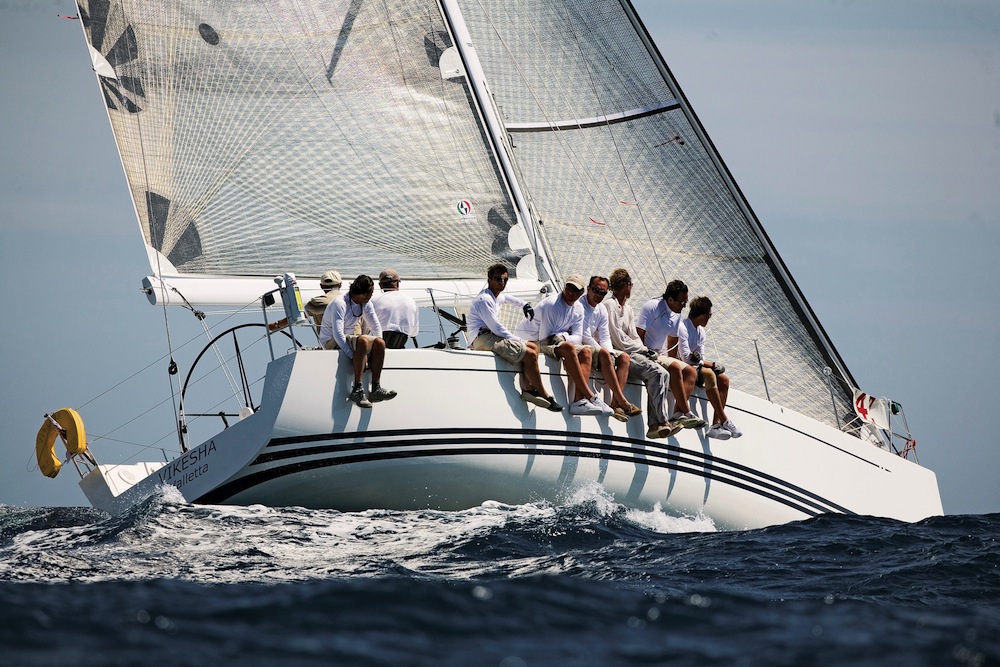
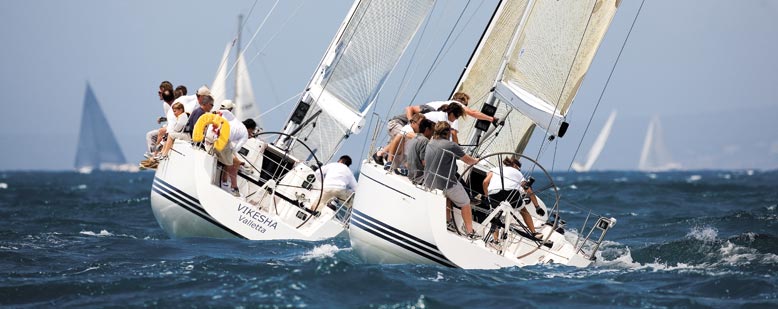
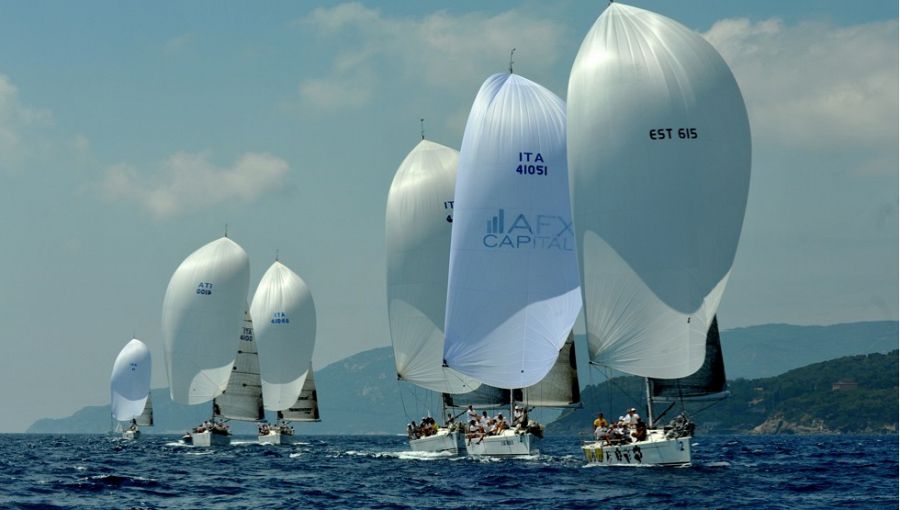
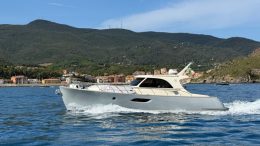
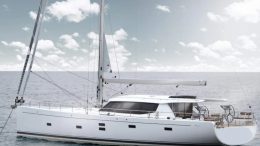
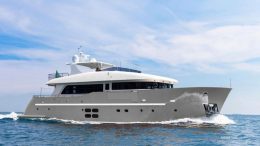
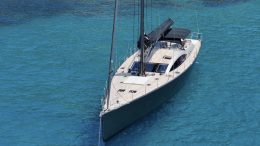
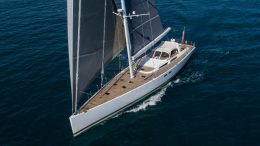
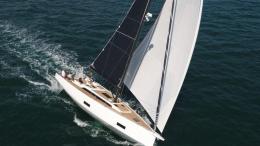
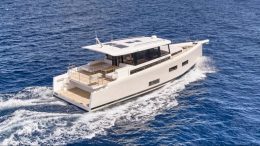
Follow us on: